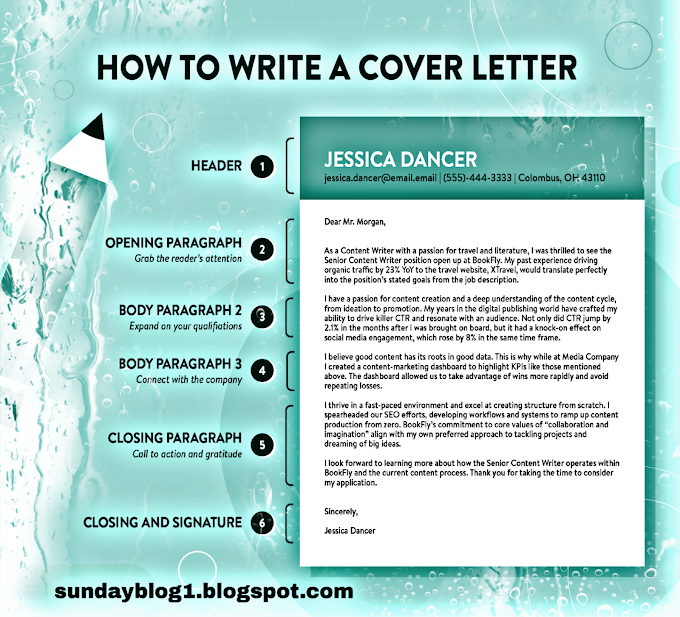When it comes to crafting a resume, one of the most important decisions you'll make is how far back should i go on a resume.
Many job seekers struggle with this decision, but with the right approach, you can present your older experience in a way that will showcase your qualifications and make you stand out as a candidate to potential employers.
In this article, we'll explore the general rule of thumb for including experience on a resume, when to include experience from further back, and factors to consider when deciding how far back should i go on a resume.
Additionally, we'll discuss how to present older experience on a resume, including highlighting relevant skills and achievements, using a functional or hybrid resume format, and avoiding outdated language or technology.
With this information in mind, you'll be able to create a resume that accurately reflects your qualifications and makes you stand out to potential employers.
Resume Experience Work history Job relevance Career progression Industry-specific Resume format Skills and achievements Outdated language Job application Gaps in work history Resume tips Highlighting qualifications Functional resume Hybrid resume Relevant skills Transferable skills Timeframe Relevancy Resume crafting
Learn how far back should i go on a resume for the best results. Get tips on when to include experience from further back and how to present older exp
I. Introduction to How Far Back Should I Go on a Resume
A well-crafted resume is an essential tool for job seekers.
It serves as an introduction to potential employers and provides them with a snapshot of your qualifications, skills, and experience.
However, one of the questions that many job seekers have is how far back they should go when listing their work experience on their resume.
In this article, we will discuss the general rule of thumb, when to include experience from further back, and the factors to consider when deciding how far back should i go on a Resume.
We will also provide tips on how to present older experience on a resume in a way that is both relevant and attention-grabbing.
The importance of a well-crafted resume
The importance of a well-crafted resume cannot be overstated. A resume is often the first point of contact between a job seeker and a potential employer.
It serves as an introduction to your qualifications, skills, and experience and can be the deciding factor on whether or not you are invited for an interview.
A well-crafted resume is clear, concise, and relevant to the position you are applying for. It highlights your most relevant experience, skills, and achievements and presents them in an easy-to-read format.
By showcasing your qualifications and experience in the best possible light, you increase your chances of standing out among other applicants and getting an interview.
A well-crafted resume can also help you to articulate your value proposition, show your potential to an employer, and demonstrate how you can contribute to their organization. It is an essential tool for anyone looking to advance their career or change jobs.
How far back should I go on a resume?
The general rule of thumb is that you should include the last 10-15 years of your work experience on your resume.
This allows the employer to see your most recent and relevant experience while also providing a sense of your career history.
However, there may be instances when it is beneficial to include experience from further back, especially if it is relevant to the position you are applying for.
For example, if you have a long-term career in a specific field and your earlier experience is directly relevant to the job you're applying for, it would be appropriate to include it.
Additionally, if you have achieved a significant accomplishment or held a notable position in the past that is relevant to the position you're applying for, it can be worth including on your resume.
It's important to keep in mind that the goal of the resume is to showcase your most relevant experience, skills, and achievements to an employer.
Therefore, while it's good to have a general rule of thumb, the ultimate decision on how far back to go should be based on what is most relevant and will best showcase your qualifications for the job you're applying for.
The general rule of thumb: 10-15 years
The general rule of thumb is that you should include the last 10-15 years of your work experience on your resume. This is the most commonly accepted time frame by hiring managers and recruiters.
This time frame provides the employer with a sense of your most recent and relevant experience, while also giving them an idea of your career history.
Including the last 10-15 years of your work experience on your resume also allows you to focus on your most recent accomplishments, skills, and experience, which are often the most relevant to the position you are applying for.
Additionally, employers are more interested in your most recent experience, as it is more likely to be directly related to the position you are applying for.
It's worth noting that this general rule of thumb may vary depending on the specific industry or field you are working in.
In some fields, for example, a long-term career with a specific company or a notable achievement from many years ago might be more relevant than recent experience.
In these cases, it's worth to include the experience, regardless of the time frame.
When to include experience from further back
When to include experience from further back, it's important to consider the relevancy of the experience to the position you're applying for.
If your earlier experience is directly relevant to the job you're applying for, it would be appropriate to include it.
Additionally, if you have achieved a significant accomplishment or held a notable position in the past that is relevant to the position you're applying for, it can be worth including on your resume.
For example, if you have a long-term career in a specific field and your earlier experience is directly relevant to the job you're applying for, it would be appropriate to include it.
Similarly, if you held a significant position in a notable company or organization in the past, it would be worth including that information, even if it falls outside of the 10-15 year time frame.
Another instance where it's beneficial to include experience from further back is if you have a gap in your work history. Including earlier work experience can help to fill in the gap and demonstrate that you have a consistent work history.
It's important to keep in mind that the goal of the resume is to showcase your most relevant experience, skills, and achievements to an employer.
Therefore, while it's good to have a general rule of thumb, the ultimate decision on how far back to go should be based on what is most relevant and will best showcase your qualifications for the job you're applying for.
Factors to consider when deciding how far back to go
Relevancy to the job you're applying for: The most important factor to consider when deciding how far back to go on your resume is the relevancy of your experience to the job you're applying for.
If your earlier experience is directly relevant to the job, it would be appropriate to include it.
- Career progression and gaps: If your career progression is clear and consistent, it may not be necessary to include experience from further back.
- However, if you have gaps in your work history, including earlier work experience can help to fill in the gap and demonstrate that you have a consistent work history.
- Industry and field-specific considerations: Some industries and fields place a higher value on long-term experience and career progression.
In these cases, it may be more appropriate to include experience from further back.
- Highlighting specific skills or achievements: If you have specific skills or achievements that you want to highlight, even if they are from many years ago, they can be included as well.
- Resume length: The length of your resume should be considered as well. If it's too long, it may be hard for the employer to read, so it's important to include only the most relevant information.
In summary, the general rule of thumb is to include the last 10-15 years of your work experience on your resume, but you should also consider the relevancy of the experience to the job you're applying for, your career progression and gaps, industry and field-specific considerations, highlighting specific skills or achievements, and the overall length of the resume.
Relevancy to the job you're applying for
Relevancy to the job you're applying for is the most important factor to consider when deciding how far back to go on your resume.
When tailoring your resume for a specific job, it's essential to focus on the most relevant experience and skills that align with the job requirements.
For example, if you're applying for a job in the technology field and have 10 years of experience in the industry, it's likely that your most recent experience will be the most relevant to the position.
However, if you have a specific accomplishment or skill from an earlier job that is particularly relevant to the position, it's worth including that information, even if it falls outside of the 10-15 year time frame.
It's also worth highlighting transferable skills that you may have acquired in jobs that are not directly related to the job you're applying for.
This can demonstrate to the employer that you have a diverse range of skills and experiences that can be applied to the job.
In summary, when deciding how far back to go on your resume, the most important factor to consider is the relevancy of your experience and skills to the job you're applying for.
By highlighting your most relevant qualifications, you increase your chances of standing out among other applicants and getting an interview.
Career progression and gaps
Career progression and gaps are another important factor to consider when deciding how far back to go on your resume.
If your career progression is clear and consistent, it may not be necessary to include experience from further back. In this case, focusing on your most recent experience will be sufficient for the employer to understand your qualifications and career history.
However, if you have gaps in your work history, it may be beneficial to include experience from further back to fill in those gaps and demonstrate that you have a consistent work history.
Including earlier work experience can also help to show that you have relevant experience even if you have been out of work for a period of time.
Additionally, if you have a career progression that shows an upward trajectory in terms of responsibilities, titles, or industries, it's worth highlighting that by including experience from further back.
This can help to demonstrate that you have the skills, experience, and ambition to advance in your career.
It's important to keep in mind that while gaps or career progression might be important factors to consider, they are secondary to the relevance of your experience to the job you're applying for.
It's always important to focus on the most relevant experience and skills that align with the job requirements.
In summary, when considering career progression and gaps, you should focus on highlighting the most relevant experience, skills, and achievements that align with the job requirements, and use that information to fill in any gaps or progressions in your work history.
Industry and field-specific considerations
Industry and field-specific considerations are important factors to consider when deciding how far back to go on your resume.
Different industries and fields place different values on experience and career progression.
For example, in some industries, such as technology or finance, the focus is often on the most recent experience and skills that align with the job requirements.
In these cases, it may be more appropriate to include only the last 10-15 years of experience.
However, in other industries, such as law or academia, a long-term career with a specific company or a notable achievement from many years ago might be more relevant than recent experience.
In these cases, it may be appropriate to include experience from further back, regardless of the time frame.
It's worth noting that it also depends on the specific position you're applying for.
For entry-level positions, your most recent experience will be more relevant, while for senior or executive positions, experience from further back may be more important.
In summary, when considering industry and field-specific considerations, you should consider the relevance of your experience to the job you're applying for, as well as the industry and field's specific values on experience and career progression.
This will help you to make an informed decision on how far back to go on your resume.
How to present older experience on a resume
Be selective: When including older experience on your resume, it's important to be selective about what you include. Only include the most relevant experience and skills that align with the job requirements.
Use a functional format: A functional format can help to emphasize your skills and achievements, rather than your work history. This can help to draw attention to the most relevant experience, regardless of when it occurred.
Use descriptive language: Use descriptive language to clearly and effectively communicate the responsibilities and achievements of your older experience.
This will help the employer to understand the relevance of the experience to the job you're applying for.
Use bullet points: Use bullet points to make the information easy to read and understand. This will help the employer to quickly identify the most relevant experience and skills.
Show the progression: It's important to demonstrate that you have been working consistently, even if it is not a straight line.
If you have worked in different fields or sectors, it's important to show how you have progressed and how your skills have been transferable.
In summary, when including older experience on your resume, it's important to be selective, use a functional format, use descriptive language, use bullet points, and show the progression.
This will help to effectively communicate the relevance of the experience to the job you're applying for and make it easy
Highlighting relevant skills and achievements
Highlighting relevant skills and achievements is crucial when including older experience on a resume.
Even if the experience is from further back, if it is relevant to the job you're applying for and showcases your skills and achievements, it should be included.
Here are a few ways to highlight relevant skills and achievements:
- Use keywords: Use the keywords and phrases from the job description in your resume, including in the description of your older experience. This will help the employer to see how your skills align with the job requirements.
- Show quantifiable results: Use numbers and statistics to demonstrate the impact of your skills and achievements. This will help to show the employer the value you can bring to the position.
- Highlight transferable skills: If the experience is not directly related to the job you're applying for, highlight how the skills and experiences you gained in the previous job can be transferable to the current one.
- Use action verbs: Use action verbs such as "managed," "led," "created," "implemented," etc. to describe your responsibilities and achievements. This will help to make your experience more impactful and show the employer how you have contributed to your previous company.
- Show the progression: If you have progressed in your career, even if it's not a straight line, it's important to show that progression. This will demonstrate to the employer that you have ambition and the drive to advance in your field.
In summary, when including older experience on your resume, it's important to highlight relevant skills and achievements by using keywords, showing quantifiable results, highlighting transferable skills,
using action verbs, and showing the progression. This will help the employer to understand the relevance of the experience to the job you're applying for and see the value you can bring to the position.
Using a functional or hybrid resume format
Using a functional or hybrid resume format can be a useful strategy for highlighting older experience on a resume.
A functional format emphasizes skills and achievements over work history.
This can be particularly useful for older experience, as it allows you to draw attention to the most relevant skills and achievements, regardless of when they occurred.
A hybrid format, also called a combination resume, combines the functional format with a chronological format.
This format allows you to highlight the most important parts of your experience and skills, while still showing the progression of your career.
Here's an example of how to use a functional or hybrid resume format to highlight older experience:
Functional format:
A summary or objective statement that highlights your relevant skills and achievements
A skills section that lists your most relevant skills, including any acquired during your older experienc.
Work history section, where you list the most recent and relevant experience, but do not include the dates or the job titles.
Hybrid format:
- A summary or objective statement that highlights your relevant skills and achievements
- A skills section that lists your most relevant skills, including any acquired during your older experience
- A work history section where you list your most recent and relevant experience, including job titles, company names, and dates. But, also you can highlight the most important parts of your experience and skills,
It's worth noting that using a functional or hybrid format does not mean you should leave out important information.
It's always important to be honest and provide accurate information on your resume, including the dates of your experience.
In summary, using a functional or hybrid resume format can be a useful strategy for highlighting older experience on a resume by emphasizing skills and achievements over work history, and allowing you to draw attention to the most relevant skills and achievements, regardless of when they occurred.
Avoiding outdated language or technology
When including older experience on a resume, it's important to avoid using outdated language or technology.
This can make your experience appear less relevant and make it more difficult for the employer to understand the skills and achievements you gained during that time.
Here are a few tips to avoid using outdated language or technology:
- Use current industry terminology: Make sure to use current industry terminology and phrases when describing your experience. This will help the employer to understand the relevance of the experience to the job you're applying for.
- Highlight any retraining or updates you have taken: If you have updated your skills with retraining or taken a course in a new technology, highlight it. It will demonstrate that you are proactive in keeping your skills up to date.
- Use a summary statement: Use a summary statement to highlight the most relevant and current skills and experience that align with the job requirements.
- Omit technologies that are not in use anymore: If you have experience with technologies that are no longer in use or have been replaced, it's best to omit them from your resume.
- Emphasize the skills, not the technologies: Focus on the skills you gained during your older experience, rather than the specific technologies you used. These skills will likely still be relevant and transferable to the current position.
In summary, when including older experience on a resume, it's important to avoid using outdated language or technology.
Use current industry terminology, highlight any retraining or updates you have taken, use a summary statement, omit technologies that are not in use anymore, and emphasize the skills, not the technologies you gained during that experience.
This will help the employer to understand the relevance of the experience to the job you're applying for and see the value you can bring to the position.
Also Read 👉 5 best free online Resume builders
Conclusion
In conclusion, deciding how far back to go on a resume is an important decision that should be based on relevance to the job you're applying for, career progression, and industry and field-specific considerations.
The general rule of thumb is to include experience from the last 10-15 years, but in certain situations, it may be appropriate to include experience from further back.
To make older experience stand out, it is important to highlight relevant skills and achievements, use a functional or hybrid resume format, and avoid using outdated language or technology.
By following these guidelines, you can present your older experience in a way that will showcase your qualifications and make you stand out as a candidate to potential employers.




